Desmodromic valve system

The characteristic and universally used mushroom or "poppet" valves (used in every 4-stroke engine) will open during their down-stroke and close during their up-stroke, until they make contact with their seats in the cylinder head.
Normally, the valve is operated by a "cam" system, which controls valve opening (down-stroke), while the valve "return", i.e. the closing movement (up-stroke) is the result of the action of a spring, in most cases.
Valve float is an adverse condition which occurs when the poppet valves on an internal combustion engine valvetrain do not remain in contact with the camshaft lobe during the valve closure phase of the cam lobe profile. This reduces engine efficiency and performance and potentially increases engine emissions.
Valve bounce is a related condition where the valve does not stay seated, due to the combined effects of the valve's inertia and resonance effects of metallic valve springs that effectively reduce the closing force, and allow the valve to re-open partially.
Desmodromic valve drive was often justified by claims that springs could not close valves reliably at high speed and that the forces caused by suitably strong springs exceeded what cams could withstand. Since then, valve float was analyzed and found to be caused largely by resonance in valve springs that generated oscillating compression waves among spring coils.
High speed photography showed that at specific resonant speeds, valve springs were no longer making contact at one or both ends, leaving the valve floating before crashing into the cam on closure.
For this reason as many as three concentric valve springs, press fit into each other, were often used, not for more force (the inner ones having no significant spring constant), but to act as snubbers to reduce oscillations in the outer spring.
Stiffer valve springs can help prevent valve float and valve bounce, but only at the expense of increased friction losses. Various techniques have been used to offset the effect of stiffer springs, such as dual-spring and progressive-sprung valves, roller-tipped tappets, and pneumatic valves in Formula One.
Less obvious secondary effects is that valve springs typically weigh as much as the valves which they actuate, that mean the total mass which needs to be moved by the actuation mechanisms (belt, bearings, shafts) also need to be larger in order to avoid fatigue failures. The combined weight of the mechanism and the energy needed to overcome the spring forces and added frictional forces means that a larger fraction of the engine's available power output is being used for valve actuation.
If in a racing application a normal valve spring engine had an upper rpm limit of about 10,000 rpm, that same engine design when equipped with a Desmodromic valve system would be capable of 15,000 rpm, and much more power.
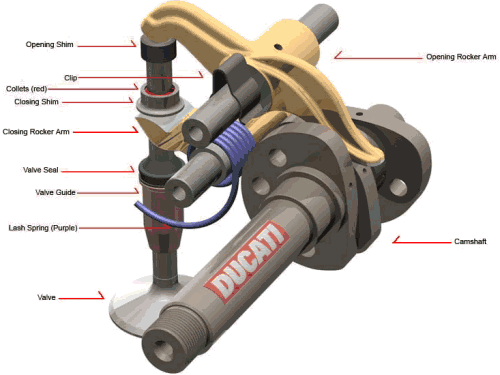
While the desmodromic system is not the most ideal in a practical world of mechanics, it still survives and performs without problem to this day. While it can be more expensive to maintain than traditional spring actuated valve systems, there are many aftermarket precision machined components which can extend the maintenance interval to that of the almost magical spring actuated systems in comparable engines.
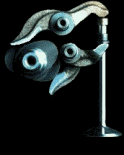
In traditional spring valve actuation, as engine speed increases, the inertia of the valvetrain overcomes the spring's ability to close the valve completely before the piston reaches Top Dead Centre. This can lead to several problems. First, and most catastrophic, the piston will collide with the valve and thus damage it permanently. Second, the valve will not completely return to its seat before combustion begins. This allows cylinder gases and pressure to escape prematurely, which causes a major decrease in engine performance and can cause the valve to overheat, possibly causing warping or catastrophic valve failure or both. In valve spring engines the traditional remedy for valve float is explained before. The desmodromic system avoids this problem, because although it has to work against the directional energy of the valve opening and closing, it does not have to overcome the static energy of the spring. Anyway, in desmodromic valve sistem there is a small spring. The springs are only necessary to take up the closure system slack.
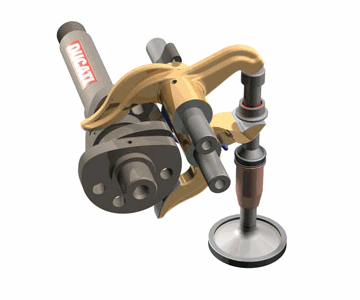
Italian motorcycle manufacturer Ducati uses the desmodromic (springless) valve system to counter this problem and allow for higher engine speeds. The system consists of a mechanical lifter mechanism that uses a second rocker arm to push the valve closed. Formula 1 engine manufacturers use a pneumatic system to close the valves to allow for very high RPM without valve float.

The main benefit of the desmodromic system is the prevention of valve float and that there are no heavy power robbing springs used to close the valves, better protection for the engine if it is over revved, and better performance and/or overall efficiency.
The disadvantage of the Desmodromic valve system is its complexity and cost. And while the overall efficiency possible in a Desmodromic design can not be achieved in current applications it's main advantage, greater power output, can be achieved at less expense by using four or more valves per cylinder.
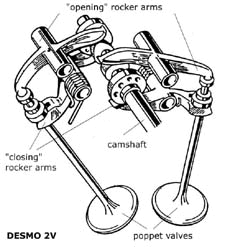 |
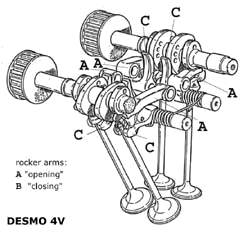 |
Desmodromic, 2 valve per cylinder |
Desmodromic, 4 valve per cylinder |
The word "desmodromic" is derived from two Greek roots, desmos (controlled, linked, captive) and dromos (course, track, in the shape of a racecourse ). It refers to the exclusive valve control system used in Ducati engines: both valve movements (opening and closing) are "operated".
We usually say that action on the valve is "positive" in both cases, in other words, both strokes are "controlled".
In mechanical terms, the word desmodromic is used to refer to mechanisms that have different controls for their actuation in different directions.
While the design can be noisy, it is typically overridden by road noise from tires and other engine components such as intake and exhoust noise. Though stated above the noise is "uncomfortably loud in engines with four or more cylinders", if true, this is limited (in terms of Ducati) to the MotoGP and MotoGP Race Replica bikes which are the only current production desmodromic motors that feature four cylinders; they are intended for race use. (It should be noted that exhaust noise levels can exceed 110dB on full race trim.)
Ducati has consistently used its desmodromic system ever since 1956. It is the only manufacturer in the world to have applied it to anything from standard production bikes to Superbike and MotoGP bikes
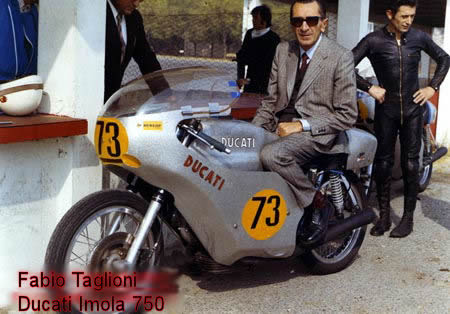
The Desmodromic valve system was designed and developed by Dr. Fabio Taglioni.
Taglioni was the father of the modern desmodromic valve actuation system, and worked for Ducati for most of his career.
Born in 1920 in Lugo di Romagna, Taglioni graduated as an engineer in 1948. He worked at Mondial in the early 50's, and when he had a falling out with management, offers were soon on the table from Ford and Ducati. Certainly Ford's was the more lucrative offer, but Ducati offered something Ford could never offer. Autonomy and the chance to form a race team. Taglioni went to work for Ducati as chief designer and technical director in 1954, and work there until 1989, the first of a series of decisions which ignored money in favor of doing what he wanted to do.
He began in the 1950s by designing Ducati singles, and in 1963 designed the prototype V4 Ducati Apollo. This led to the 1972 Ducati 750 Imola Desmo, and the 1970s and 1980s production Ducati V-twin motorcycles.
His desmodromic V-twin design is still used in all current Ducati motorcycle engines. Among the many race victories of his early desmo twin, the 1978 legendary return of Mike Hailwood at the Isle of Man is perhaps the most memorable.
Fabio Taglioni died in Bologna in late July 2001 at the age of 80.






